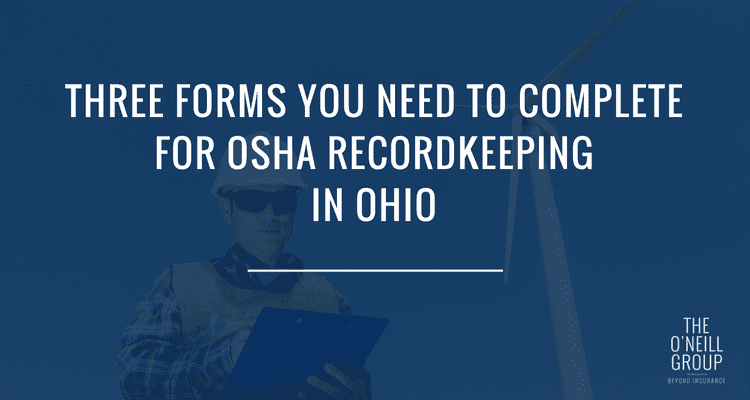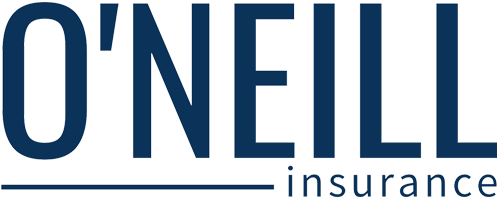
When it comes to OSHA recordkeeping, questions loom.
We get them all the time.
Am I required to keep OSHA records?
What’s considered an OSHA recordable incident?
Do my OSHA records need to be posted publicly?
…the list goes on.
But what happens is, when the questions go out on Google – you get a myriad of responses.
You desperately try to piece the puzzle together, and are left with more uncertainties.
Am I right?
So in this article we aim to answer them all.
Let’s break it down to the very basics of OSHA recordkeeping to give you a clear understanding of what’s required for OSHA records, who’s required to keep OSHA records, and what’s considered an OSHA recordable incident.
What is OSHA Recordkeeping?
The Occupational Safety and Health Act, also referred to as the OSH Act, requires certain employers to keep detailed records of certain occupational injuries and illnesses that occur at or as a result of your facility.
The Occupational Safety and Health Administration, also referred to as OSHA, is responsible for administering and ensuring compliance of the recordkeeping system established by the OSH Act.
There are a number of forms OSHA requires employers to use to meet their recordkeeping obligations.
- OSHA 300 Log
- OSHA 300A
- OSHA 301
Are You Subject to OSHA?
If you are a private sector company in the US, the District of Columbia, or any other US jurisdictions, then you are likely subject to OSHA compliance either through federal OSHA or through an OSHA-approved state program.
If you work for a state or local government, you are not covered by federal OSHA, but may have OSH Act protections in place through your OSHA-approved state program.
If you are self-employed or a farm that employs immediate family only, then you may not be subject to OSHA recordkeeping.
Are You Required To Keep OSHA Records?
The OSHA recordkeeping rule applies to companies that:
- Have more than 10 employees
- Are not classified as a partially exempt industry
A partially exempt industry includes low-hazard industries such as finance, insurance, retail, service, and real estate (to name a few).
Partially exempt means that they are exempt from standard recordkeeping requirements, but if a work-related fatality or severe injury happens at these partially exempt facilities, they are obligated to report to OSHA.
Click here for a list of partially exempt industries.
Three required osha forms
If you are subject to OSHA’s recordkeeping regulations, you must prepare and maintain records for serious work-related injuries and illnesses using OSHA Form 300, OSHA Form 300A and OSHA Form 301.
OSHA Form 300 is a log of work-related injuries and illnesses. This form is simply used to classify work-related injuries and illnesses and note the severity of each case. When an incident occurs at your facility, you must use the OSHA Form 300 to document specific details about what happened and how it happened.
OSHA Form 300A is a summary of work-related injuries and illnesses. The OSHA Form 300A reflects the total number of work-related injuries and illnesses for the year in each category. If you’re subject to OSHA recordkeeping requirements, you are required to post your OSHA Form 300A publicly for your employees to see so they are aware of the injuries and illnesses occurring at your facility. If you have more than one establishment, then you are required to post a separate summary at each physical location that is in operation for one year or longer.
OSHA Form 301 is an injury and illness incident report. When an incident occurs at your facility, you are required to fill the OSHA Form 301 out within seven calendar days after you receive the information that a recordable work-related injury or illness occurred. The OSHA Form 301 includes specific information about the employee and the treating physician, and any details about the incident. You should keep this report on file for five years following the year that the incident happens.
What Is Considered an OSHA Recordable Incident?
Not all injuries are considered OSHA recordable incidents.
To determine if the incident is an OSHA recordable incident or not, you need to determine whether the injury is work-related and if any recording criteria applies.
If your company is subject to OSHA recordkeeping requirements, then you must record work-related injuries and illnesses that result in:
- Death
- Loss of consciousness
- Days away from work
- Restricted work or job transfer
- Medical treatment beyond first aid
In addition to the above criteria, other recordable incidents include anything that may classify as “significant,” meaning that the injury or illness has been diagnosed by a physician or other licensed health care professional.
Most significant injuries and illnesses will result in death, days away from work, restricted work or job transfer, medical treatment beyond first aid or loss of consciousness.
But some significant injuries, such as a fractured toe, which may not require medical treatment or work restrictions, should still be considered a recordable.
There are also significant progressive diseases such as certain types of cancer, for which medical treatment or work restrictions may not be recommended at the time of the diagnosis, but are likely to be recommended as the disease progresses.
If you have a work-related injury or illness at your facility that involves chronic irreversible diseases, cancer, fractured or cracked bones, or punctured eardrums – you must include this on your OSHA records at the time of diagnosis by a credible health professional.
Additional Criteria To Consider For An OSHA Recordable Incident
Other work-related incidents that should be recorded on your OSHA logs include:
- A needlestick injury or cut from a sharp object that’s contaminated with another person’s blood or other potentially infectious material
- Any case requiring an employee to be medically removed under the requirements of an OSHA health standard
- Tuberculosis infection as evidenced by a positive skin test or diagnosis by a physician or other licensed health care professional after exposure to known case of active tuberculosis
- An employee’s hearing (audiogram) that reveals a standard threshold shift (STS) in hearing in one or both ears, or a total hearing level of 25 decibles or more above audiometric zero as the STS.
what if my employee wants their information confidential?
The Health Insurance Portability and Accountability Act (HIPAA) protects the privacy of your employees by providing federal protections for personal health information held by covered entities, such as health plans, insurance issuers and health care providers.
But HIPAA does not apply to certain information that’s held by your company, such as information about the occurrence of a work-related injury or illness.
HIPAA contains specific exceptions for uses and disclosures of information required by law, such as OSHA’s recordkeeping rule, which requires that employees can have full access to the complete OSHA 300 Log, including names of those injured or ill, except for privacy cases.
What’s Considered an OSHA Privacy Concern Case?
Privacy concern cases are those cases that are very personal in nature. Here’s a complete list of the type of injuries or illnesses you can consider as a privacy concern case:
- An injury or illness to an intimate body part or to the reproductive system
- An injury or illness resulting from a sexual assault
- A mental illness
- A case of HIV infection, hepatitis or tuberculosis
- A needlestick injury or cut from a sharp object that’s contaminated with blood or other potentially infectious material
- Other illnesses, if the employee independently and voluntarily requests that his/her name is not included on the log
If you have a privacy concern case on your log, instead of entering the name of the person that is/was injured or ill, you can enter “privacy case” and keep a separate, confidential file with a list of the case numbers and employee names for the privacy concern cases.
Need Help With Your OSHA Logs?
We’ve got you covered.
Here at The O’Neill Group, we have a digital, web-based platform that enables you to record your OSHA incidents electronically, and that information will automatically populate on your OSHA 300 and 300A form.
Our OSHA Logs platform also allows you to create a first report of injury, track injuries, keep all required OSHA reports electronically, and view injury metrics in real-time.
And here’s the good news…
It’s 100% free for you to use!
Interested in getting set-up on our OSHA logs platform?
Call us at (330) 334-1561 or email insurance@oneillinsurance.com to request access to our free OSHA Logs platform.
{{cta(‘84663d01-e081-4e98-bd51-d747bf7c1dc9’)}}
This article was adapted from Zywave. This is not intended to be exhaustive nor should any discussion or opinions be construed as legal advice. Readers should contact legal counsel or an insurance professional for appropriate advice.

